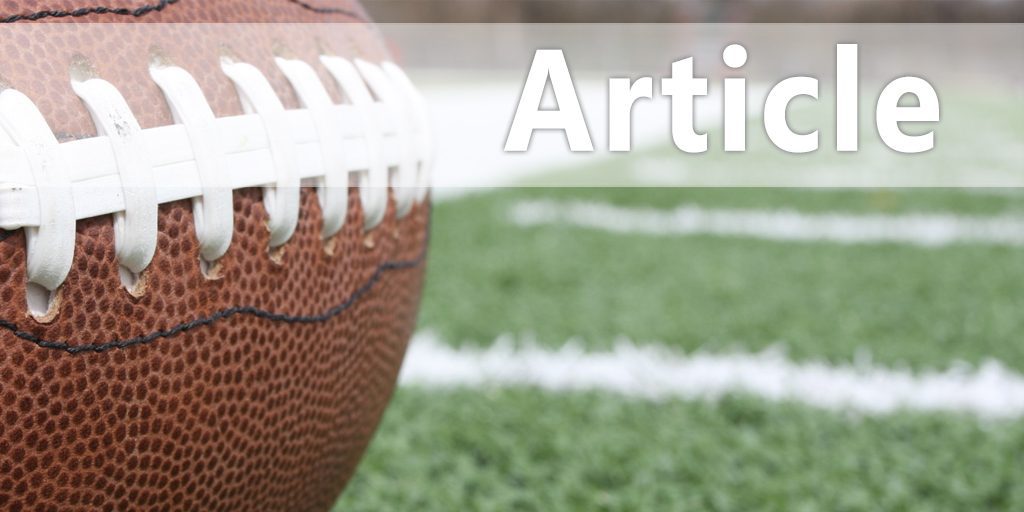| Force More Turnovers with Ohio State Football's 'Match the Hand' Defensive Drill |
| By: Brandon Hall
Provided by: STACK Few teams force them like the Ohio State Buckeyes. After suffering a midseason loss to Iowa, the Buckeyes ripped off five straight wins to end 2017. They forced 11 turnovers during those five games, including four during their dominant Cotton Bowl victory over USC. One reason Ohio State is so effective at forcing turnovers? The "Match the Hand" Drill. The "Match the Hand" Drill was brought to Columbus by Ohio State defensive coordinator Greg Schiano, but he first learned it from Bill Belichick. One of Belichick's sons, Stephen, played for Schiano at Rutgers. The two coaches would often talk shop, which is where Schiano learned this disruptive defensive drill. The drill itself is simple enough. It centers around the pass rusher "matching" the throwing hand of the quarterback. As soon as the quarterback takes his front hand off the ball, that's a signal he's about to throw. As he begins his throwing motion, the pass rusher should extend his own arm and attempt to "match" the rising throwing hand of the quarterback. It might sound simple, but many defensive players struggle with the timing and technique needed to disrupt passes. They may throw their hands up too early, or focus solely on getting the sack once they have the quarterback in their sights. Sam Hubbard, who was an All-Big Ten defensive end at Ohio State, explains. "The quarterback has the ball here, when they take their hand off, they're about to release the ball. As soon as we see their hand release off the ball, we match the hand," Hubbard told STACK. "We always practice matching the hand. It affects the throw of the quarterback. I think we got like seven interceptions (last season) because of that drill. Instead of trying to take the quarterback's head off, we kinda have to be a little bit selfless and match the hand and run through it." "We always talked about matching the hand to the quarterback. (Schiano) preached it. I used to get tired of him saying it in practice," McMillan told STACK. "But then I stuck my hand up and tipped the ball and it went straight into Malik's hands. Just knowing we practiced it all year and it never happened until the last game of the regular season when it was most needed. It goes to show that when you're practicing, it might not look like things are going to happen for you but just keep going and keep pushing." Timing is the most important part of the drill. If a pass rusher is rushing the quarterback with his hands up too early, the quarterback can recognize that and navigate around it. But when the pass rusher waits until he can "match the hand" before getting his mitts up, that puts the quarterback in a very tight spot. "Our big thing is you want to disrupt the path of the ball," Schiano told Fox Sports of the drill. "Sometimes you tap it, and sometimes the quarterback changes his angle. It's one of those deals where, like, if you change the compass on a boat one degree. If it goes a mile, it doesn't really change it that much but if it goes 50 miles, you're gonna be off course. Same thing with a pass. If you can change it at the point of departure, it can be [two-feet different], and those how you make interceptions." The beauty of the "Match the Hand" Drill is that it can easily be incorporated into other pass rushing drills. Simply have a player or coach act as the quarterback in such drills, and instruct them to throw the ball naturally (or simply mimic a natural throwing motion). It might take a couple reps to get the tempo down, but this will give players countless opportunities to practice "matching the hand." It might just make all the difference on game day. "I didn't think (the drill) was gonna work until we saw just how effective it really is," Hubbard said in 2017. "We do it every day. That's all I think about when I'm running to a quarterback and he's rolling out. You don't go for the hit - that's what I used to do. You just match the hand. It works every time. I've talked to all the quarterbacks and they just say they hate it so much. After doing all these drills, it's just instinct." |






